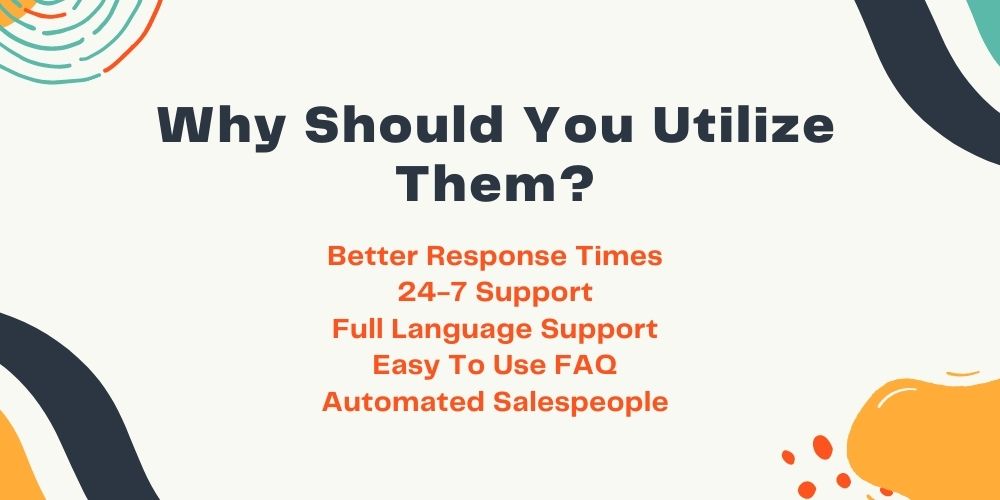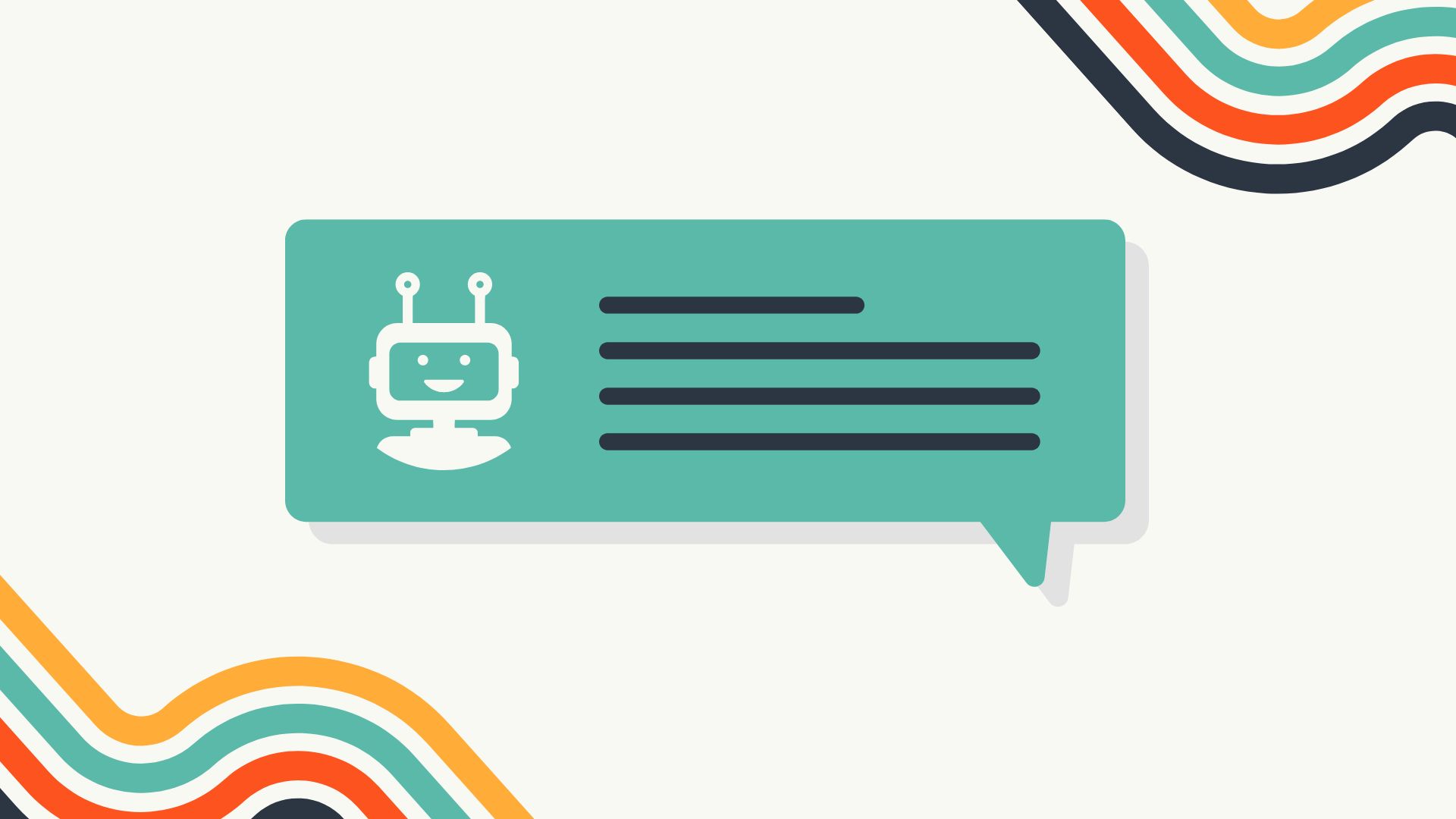Your Business and Chatbots: Everything You Need To Know
Chatbots are becoming quite a popular option for businesses to use on their sites. If you haven’t used them yet, here’s everything you need to know about them.
With every passing year, the tech we use advances at a surprising rate. This is especially true when it comes to AI. In fact, in our post covering upcoming web development trends to expect in 2023, we specifically talk about how we expect to see a drastic increase in the amount of AI integration we use within our websites. And chatbots are among the most significant developments to be aware of in this space.
Chatbots have quickly gone from a comical annoyance to something that could legitimately pass as real human beings. Of course, this technology is still far from perfect, but we’re at the point where businesses are fully utilizing them on their sites.
If you haven’t gone down this road for your company yet, now’s the time to check it out. To get started, you’ll want to learn everything you need to know about chatbots and how they can help your business. In this post, we’ll cover just that.

What Is a Chatbot?
At its core, a chatbot isn’t that much different from a voice assistant like Siri or Alexa. People ask questions, and the chatbot responds with relevant information. The key variation is that chatbots are text-based. Another feature that makes them distinct is the fact that they usually start the conversation.
Most voice assistants only respond to queries that a person has, whereas chatbots initiate the interaction. People rarely use chatbots that sit silently on a webpage, so these programs need to find ways to get customers’ attention by asking them questions.
How Does It Work?
Of course, this doesn’t magically happen. There are specific processes that’ll drive your chatbot to activate. The steps in this process include a list of automated rules, natural language processing (NLP), and machine learning (ML). The automated rules you set will enable the chatbot to follow a process that leads to your desired result, whether that’s confirming a sale or answering a customer service-related question.
If every human responded to your chatbot the same way, the rules list would be all you need. Unfortunately, people are unpredictable. This is where NLP and ML come into play. These programs work together to develop responses that make sense to the end-user and tailor responses directly to their individual experiences.
What Types of Chatbots Are There?
Not all chatbots utilize each of these processes, though. There are two primary types of this AI: simple and smart chatbots. The simple ones only utilize the first step in the process. They follow a base set of rules to answer people’s queries. However, they go a bit more in-depth than extremely basic rules. Simple chatbots actually use a complex flowchart of potential responses to give people the answers they seek.
The more in-depth you make this flowchart, the better people will perceive your chatbot. The reason why some companies choose the basic route is it saves money. Simple chatbots are very cheap and, in some cases, free. Plus, they’re straightforward enough that your team could potentially develop one yourself.
If you want something that seems more like a real human being, though, you’ll want a smart chatbot. While these might not seem too impressive initially, the ML component will improve over time by learning how your customers talk and what kinds of questions they ask most often. Then it will use NLP to respond in a natural format.
Obviously, you’ll have to pay a lot more for these advanced features. Some agencies will do the dirty work for you, or you can buy a program they’ve already perfected. Either way, creating your own smart chatbot from scratch likely won’t be worth the time or money to do, but that depends on your needs and your team’s abilities.

Why Should You Utilize Them?
Now that you know more about chatbots, we’ll get into how beneficial they can be for your business. It shouldn’t come as a surprise that there are quite a few advantages to integrating these AI systems.
Better Response Times
One of the biggest reasons why companies switch from live people to chatbots is the improved response times. No matter how many people you hire or how skilled they are, it’s impossible to have instant responses for live chats. It’s impossible to keep up with all influxes of customers, and your employees are only human; they’ll slow down eventually.
AI systems, on the other hand, are unstoppable machines in comparison. One chatbot can handle multiple customers at once and respond to each of them simultaneously if needed. Granted, you can still overload a chatbot during extremely busy times, but this will be much rarer than it is with human responders.
24-7 Support
Another plus to chatbots is their ability to give 24-7 support. AI systems don’t need to sleep or adhere to standard work hours, so customers can receive help at any time of the day. While 24-7 support is possible with human responders, you’ll need to utilize overseas companies that are awake during the night, which can lead to further confusion due to language and cultural barriers.
Full Language Support
Speaking of which, though, most chatbots come with full language support options. That means if you sell to communities that don’t speak the language your employees speak or sell to multiple countries that use various languages, your chatbot can adapt accordingly. In the past, you’d have to hire live agents who spoke those languages. Now, your chatbot will automatically change to a language as long as it supports it.
Easy To Use FAQ
As we previously mentioned, many chatbots exist to answer questions. In the past, most sites would use a FAQ page for this. While those pages can still be useful, they’re sometimes complicated to use and never address every question. Chatbots make this process much easier, especially when the question relates to general site navigation.
Automated Salespeople
The best plus to chatbots is their ability to sell. In the past, not many companies would hire salespeople simply to have them try to sell to people already on the site. That means, for many businesses, this is a brand-new ability they can utilize, which can create a noticeable spike in online sales.

What Should You Avoid Doing With Them?
If you feel sold on using a chatbot for your website, don’t jump on the opportunity just yet. We also want to cover a few problems you should avoid. These are mistakes that many new users make, so avoiding them completely will give you a leg-up on the competition.
Don’t Cut Out Humans Entirely
Even though the point of a chatbot is to cut out the human element of live chats, you should still keep some customer service staff members around. This is because, no matter how advanced your system is, it will run into some complications. Having real people who can answer tough questions or calm down angry customers is necessary for running a successful chatbot program.
Never Pass Off Your Chatbot as a Human
On top of keeping humans around, never try to pass off your chatbot as a real person. Even though some of them are quite convincing these days, most people can tell when they’re talking to an AI system. Certain things will tip them off, and if the customer figures out that you’re lying to them, it’ll break their trust in you.
While this might not bother some people, it could lead others to swear off your company for good. A good way to ensure people know they’re talking to a bot is to let them know what your chatbot can and can’t do. That way, they’ll have an easier time communicating with it.
Avoid Spamming Your Customers
The tricky element to using chatbots is that you must find a balance between interrupting your customers’ flow and leaving them alone entirely. While it’s good to let people know the bot is there to help, if you remind them every time they move to a new page, it’ll get old fast.
On top of that, your messages can become too spammy if you set your bot up to try and make sales. The main goal should always be to answer questions. If you can work in some lines that try to push certain products or speak about how great your brand is, that’s okay. Just don’t overdo it in a single conversation.
Don’t Make Messages Too Long
Finally, we have one final suggestion that isn’t as big of a deal as the previous ones but is important nonetheless. Try to avoid long messages with your chatbot’s responses. The longer a response is, the less likely a customer is to read it, especially since the chat boxes for these programs are quite small.
You need to keep things short and digestible. You can do this by having the chatbot only give info on what people ask. If you go overboard, your customers might get annoyed. If they’re interested in more information, they’ll ask for it. Even though chatbots can act as sales tools, that doesn’t mean you should force this capacity.
